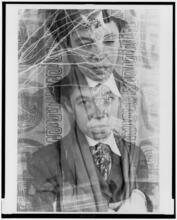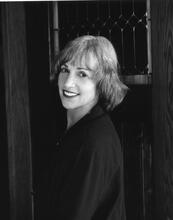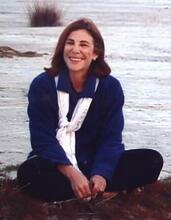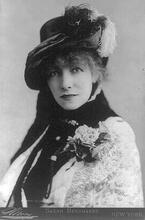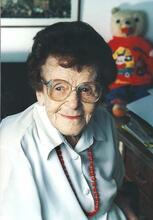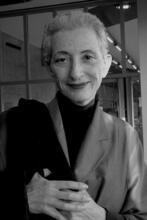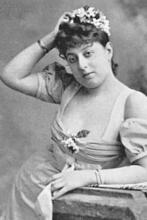Dora Shulner
Born near Kiev in 1890, Dora Shulner inherited her love of Yiddish literature from her father, who came from a family of maskilim. As a teenager, she became active in the Bund, inspired by its revolutionary fervor. World War I erupted immediately after Shulner’s husband emigrated from Russia; Shulner lived with their children for ten years without him, managing a modern maternity home in Radomyshl’. In 1924, she joined her husband in Chicago, and her first book was published in 1942. In her literature, Shulner vividly evoked for her readers life in the Pale of Settlement before, during, and after the Russian Revolution and Civil War. Shulner candidly portrayed women in their intimate relationships with men, revealing the complexity of their disappointments and aspirations.
From a literary as well as historical standpoint, the work of Dora Shulner is of interest for its portrayal of Jewish women in the Russian Pale during the first two decades of the twentieth century. Drawing on her own life experience, Shulner wrote about war and revolution, dislocation and suffering, adventure and romance, loneliness and loss.
Family & Pre-Emigration Life
Dora Shulner was born in 1890 in Radomyshl’ in the Kiev district. Her father, Motl Feldman, came from a family of female/sing.: Member of the Haskalah movement.maskilim, adherents of the Jewish enlightenment who believed the world could be improved through education and knowledge. A poor melamed, a teacher of children, he instilled in Dora, the youngest of seven, a love of Yiddish literature. Even before his illness and early death, it was Shulner’s mother, the daughter of a baker, who shouldered the burden of supporting the family by baking and selling honey cake.
At the age of ten Shulner began a series of apprenticeships with tailors and a sock maker, and at fourteen went to work in the textile factory in her town. There she became active in the Bund when revolutionary fervour was at its peak. The failure of the 1905 Revolution two years later brought arrests and pogroms. Dora Shulner, then sixteen, was prevailed upon by her mother to marry a man with whom she had little in common. A tailor by trade, her husband worked in Kiev, while Shulner remained in Radomyshl’ with her mother, helping out in the bakery and becoming increasingly active in the Bund. Over the next five years, although she saw her husband only occasionally, Shulner gave birth to four children.
In August 1914 Shulner’s husband set out to join his parents and siblings in Chicago. One week later World War I erupted. Shulner and her children were left in Radomyshl’ to experience war, revolution, pogroms and the early days of communism. It was not until 1922, when relations were established between the Soviet Union and the United States, that Shulner received the first letter from her husband. By that time she was a happy and independent young woman in charge of a modern maternity home in Radomyshl’ where women were encouraged to give birth in conditions of safety and cleanliness. Reluctantly, she yielded to intense pressure from her children and an older sister to leave for America. On the way she spent two years in Warsaw waiting for steamship tickets. Finally she rejoined the husband she had not seen in ten years.
Publications
Once in Chicago, Shulner began to write. Her first stories appeared in the Frayhayt in 1940. Her work was also published in the Chicago Jewish Courier, Undzer veg, Kalifornye yidishe shtime and periodicals published in Toronto, Winnipeg and Mexico.
Dora Shulner’s first book, Azoy hot es passirt (This Is How It Happened), a dramatic and colourful account of her life prior to her departure from the Soviet Union, was published in Chicago in 1942 and received an award from the YIVO. This was followed in 1946 by Miltchin, which contained more autobiographical material about her life in the old country and her journey to America, as well as poetry and a one-act play. Her novel Esther, whose heroine is clearly based on Shulner herself, appeared in 1949. In 1956 she published Geshtaltn, a collection of autobiographical essays, stories, poetry and aphorisms, dedicated to her husband and children.
The Uniqueness of Shulner’s Prose
An avid reader, Dora Shulner was influenced in her youth by such writers as Émile Zola, Guy de Maupassant and especially the popular Yiddish writer Nahum Meir Shaikevich, known as Shomer. She became a superb storyteller who captured the imagination of her readers with her ability to evoke in vivid detail life in the Pale of Settlement immediately before, during and after the Russian Revolution and Civil War. Like Esther, the main character of her novel, Shulner became caught up in the revolutionary ideas of the Bolshevik experiment, as is evidenced by the openness with which she wrote about love, passion and sexuality. In her characteristic exuberant and earthy prose she candidly portrayed women in their most intimate relationships with men, parents, siblings and children. She exposed their inner conflicts, their disappointments and the complexity of their motivations and aspirations.
The inclusion of the first chapter of her novel Esther in Found Treasures, the highly successful 1996 anthology of Yiddish women’s writing in translation, has introduced the work of Dora Shulner to new generations of readers the world over.
Selected Works by Dora Shulner
Azoy hot es passirt (This is How it Happened). Chicago: Radomishler Ladies Auxiliary, 1942.
Miltchin. Chicago: Aroysgegbn fun a grupe fraynd, 1946
Esther. Chicago: Dora Shulner bukh ḳomiṭeṭ, 1949
Geshtaltn. Chicago: N.p., 1946.
Leksikon fun der nayer yidisher literatur. New York: Congress for Jewish Culture, 1981
Forman, Freida, Ethel Raicus and Sara Silberstein-Swarz, eds. Found Treasures: Stories by Yiddish Women Writers. Toronto: Second Story Press, 1994
Cohen, Hagit, “The Demands of Integration—The Challenges of Ethnicization: Jewish Women's Yiddish Reading Circles in North America Between the Two World Wars.” Nashim: A Journal of Jewish Women's Studies & Gender Issues 16, no. 16 (2008): 98 – 129
Jones, Faith. “Criticizing Women.” Bridges 13, no. 1 (2008): 76-81
Seiler, Tamara Palmer. “Carrying on the tradition: Jewish women writers in Canada.” Canadian Woman Studies 16, no. 4 (1996): 131

